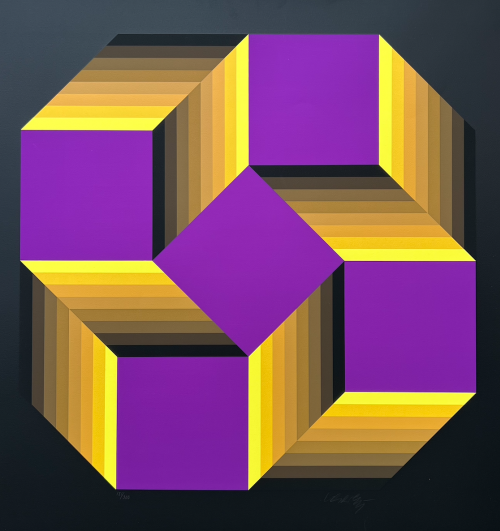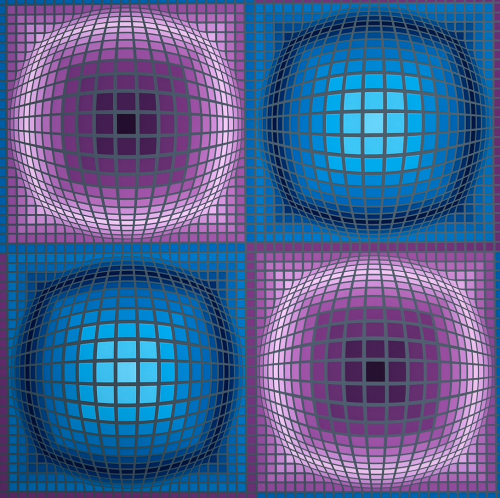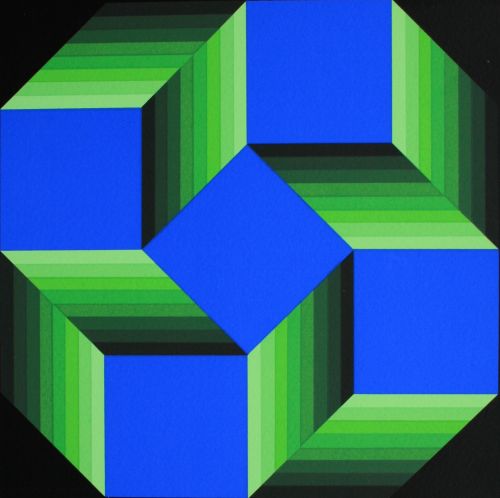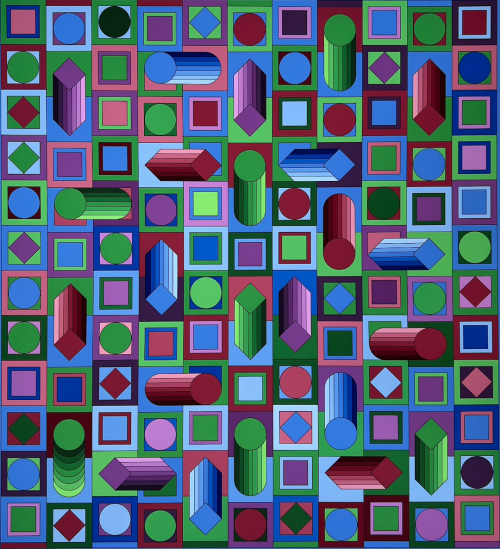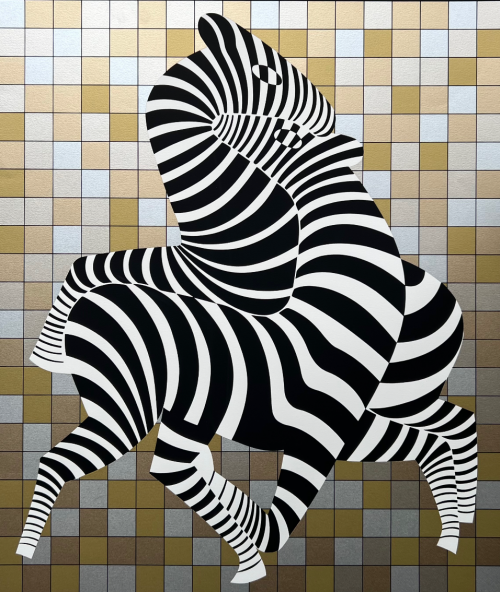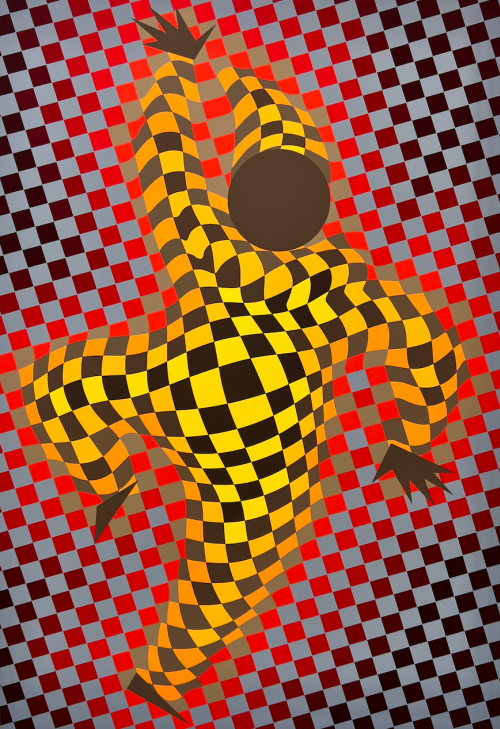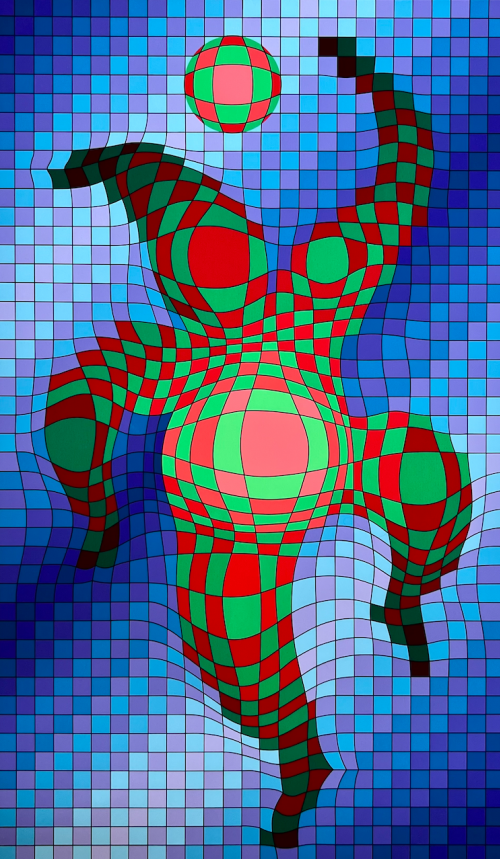About the artist:
French/Hungarian artist, sculptor and printmaker, known as a father of the "Op-Art" art movement.
As a young man Victor Vasarely had briefly considered becoming a doctor, spending two years in medical school
before following his heart and embarking on a career in art.
At the Podolini-Volkmann Academy in Budapest he studied under the tutelage of Sandor Bortnyik - a painter and
graphic designer whose work was greatly influenced by Cubism, Expressionism and Constructivism. There
Vasarely was introduced to the revolutionary ideas and styles of the Bauhaus movement, predicated on the
ecumenical principle that all art, crafts, and architecture should achieve a unity of purpose based on the cube, the
rectangle and the circle.
Still an emerging artist in 1930, Vasarely traveled to Paris to study optics and color, earning a living in graphic
design.
In 1945 his talent was recognized by Denise Rene, the gallery owner and highly influential militant champion of
post-war abstractionism, whose artits included Max Ernst, Piet Mondrian, and Kasimir Malevich. With her
support, Vasarely opened his own gallery where he exhibited his works of graphic design and painting to
growing interest.
Ceaselessly experimental - and, now, as much in the thrall of Abstract Expressionism as the Bauhaus, Vaserely
never stopped trying to forge a new artistic language out of the fusion of his influences. From this tension was
born the new levels of geometric precision, bright colouration and spatial trickery of Op Art.
Believing that art would have to combine with architecture to survive, Vasarely produced many Bauhaus
influenced studies and proposals for urban design during his career. Its philosophy fed the inspirations behind the
computer program he devised for the designing of his art, as well as the do-it-yourself kit for making Op Art
paintings. Perhaps most famously of all, however, Bauhaus principles inspired his Plastic Alphabet.
Devised between 1960-1965, the grid based system established the modular relationships between forms and
colours. In it, each painting was based on 15 root forms derived from the circle, square and triangle. Variations on
these root forms were then developed and painted using colours from different colour scales, each with 20 hues,
and each with a foreground and a background.
In what was the zenith for his Op Art, Vasarely had created an art programming language that allowed for endless
permutations of forms and colours to create individual and unique works. It was the culmination of decades of
thought and practice that, as early as 1955, had found expression in his famous Yellow Manifesto. There he had
stated that painting and sculpture had become anachronistic terms for artists who should instead speak of "bi-,
tri- and multidimensional plastic art (because) we no longer have distinct manifestations of a creative sensibility,
but the development of a single plastic sensibility in different spaces". Movement, therefore, did not rely on
composition, nor a specific subject, but "on the apprehension of the act of looking, which by itself is considered
as the only creator.”
In 1970 Vasarely opened his first dedicated museum in Gordes, France (this closed in 1996).
The Vasarely Foundation museum opened in 1976 in Aix-en-Provence, France, as did the Vasarely museum in
Pecs, Hungary – Vasarely’s place of birth.
Arworks by Vasarely are represented in many museum collections of contemporary art: The Stedelijk Museum in
Amsterdam, the Guggenheim Museum in New York - York, Museum of Modern Art in Paris, the Museum Ludwig
in Cologne, among others.

